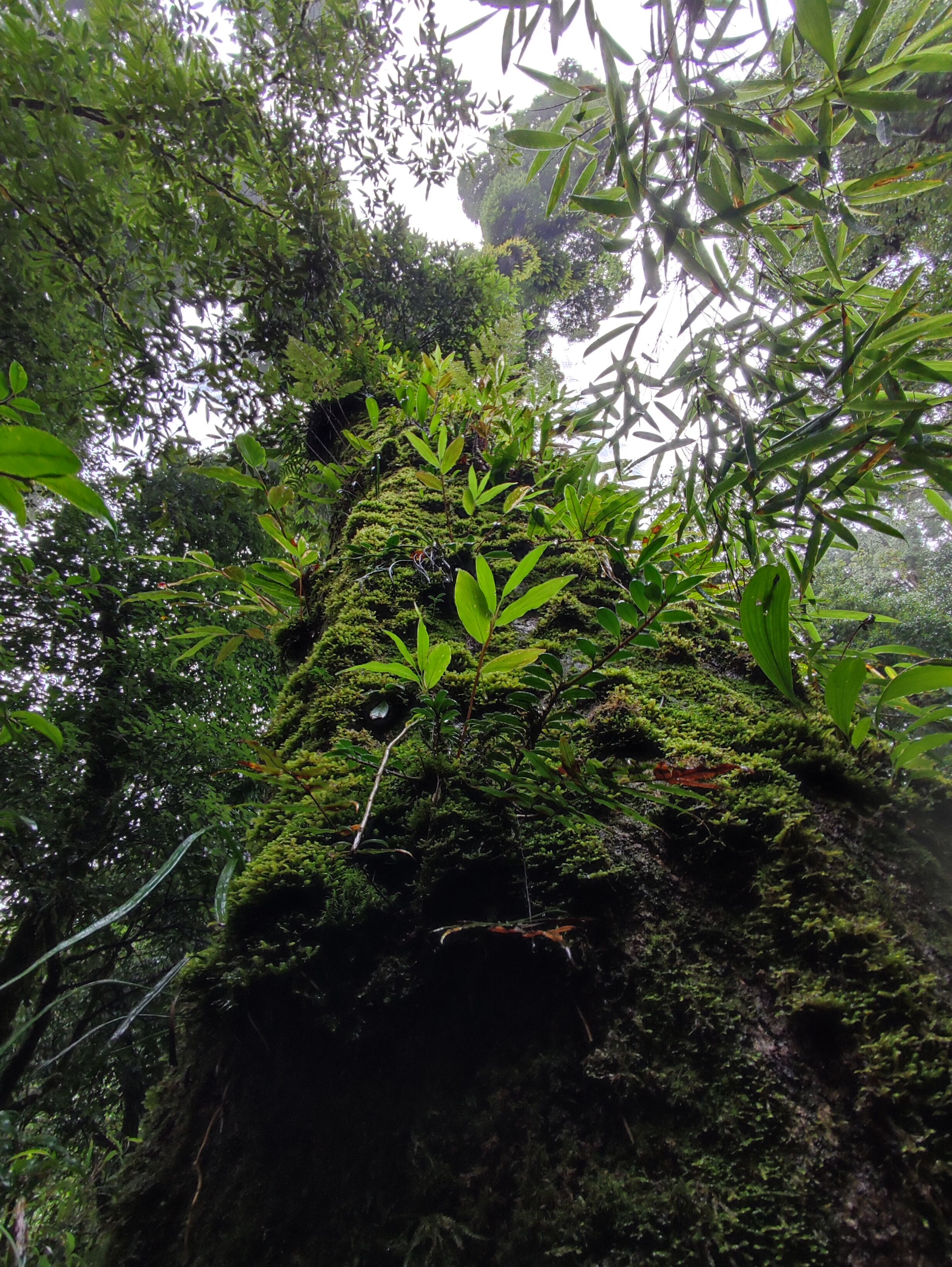Epiphytes, including lichens, bryophytes, ferns and spermatophytes, are a large and widely distributed group across many forest ecosystems. Acquiring enough nitrogen (N) to support their life processes in nutrient-poor canopies is a crucial challenge for epiphytes. It is important to see how epiphytes obtain enough nutrients to fulfill their vital life processes in canopies.
Researchers from Xishuangbanna Tropical Botanical Garden (XTBG) conducted studies in the Ailao Mountains in Yunnan Province to explore the differentiation of N sources of epiphyte groups. They employed stable isotope analysis to explore N acquisition and differentiation among co-occurring epiphytes in Ailaoshan subtropical forest.
The researchers collected materials from epiphytic cyanolichens, chlorolichens, bryophytes, and vascular epiphytes and potential N sources (phorophyte leaves, litterfall, canopy soil, ground soil, and precipitation) in similar microhabitats in secondary patches within primary forests.They analyzed and compared the N concentrations and δ15N of the collected materials.
Results of non-parametric test, linear mixed models and random forest regression suggested that functional group was the most important factor that could affect δ15N and N of epiphytes , reflecting differences in N acquisition, uptake and utilization strategies among the different groups. Atmospheric or within-canopy-derived N was more important than soil-derived N for epiphyte growth
Analysis of δ15N enrichment factors confirmed the involvement of various N sources in nutrients of epiphytes, leading to differentiation in N utilization among different epiphyte groups. Cyanolichens mainly acquired N through N2-fixation, while chlorolichens relied more on rainwater N. Bryophytes obtained considerable N from N fixation and ground soil, while vascular epiphytes acquired N from a wide range of sources, including ground soil, phorophytes and precipitation.
"Our study has shed light on differentiation in N sources of co-occurring epiphytes in Chinese subtropical forests and this could be one of the most important reasons for the survival of abundant epiphytes within nutrient-poor canopies,” said LI Su of XTBG.
The study was supported by the National Natural Science Foundation of China and published in Environmental and Experimental Botany.
Contact
LI Su Ph.D
Key Laboratory of Tropical Forest Ecology, Xishuangbanna Tropical Botanical Garden, Chinese Academy of Sciences, Mengla, Yunnan 666303, China
E-mail:lis@xtbg.ac.cn
First published: 25 September 2023 
Epiphytes in Ailaoshan subtropical forest. (Image by SU Tianhao) 
Epiphytes in Ailaoshan subtropical forest. (Image by SU Tianhao) |


